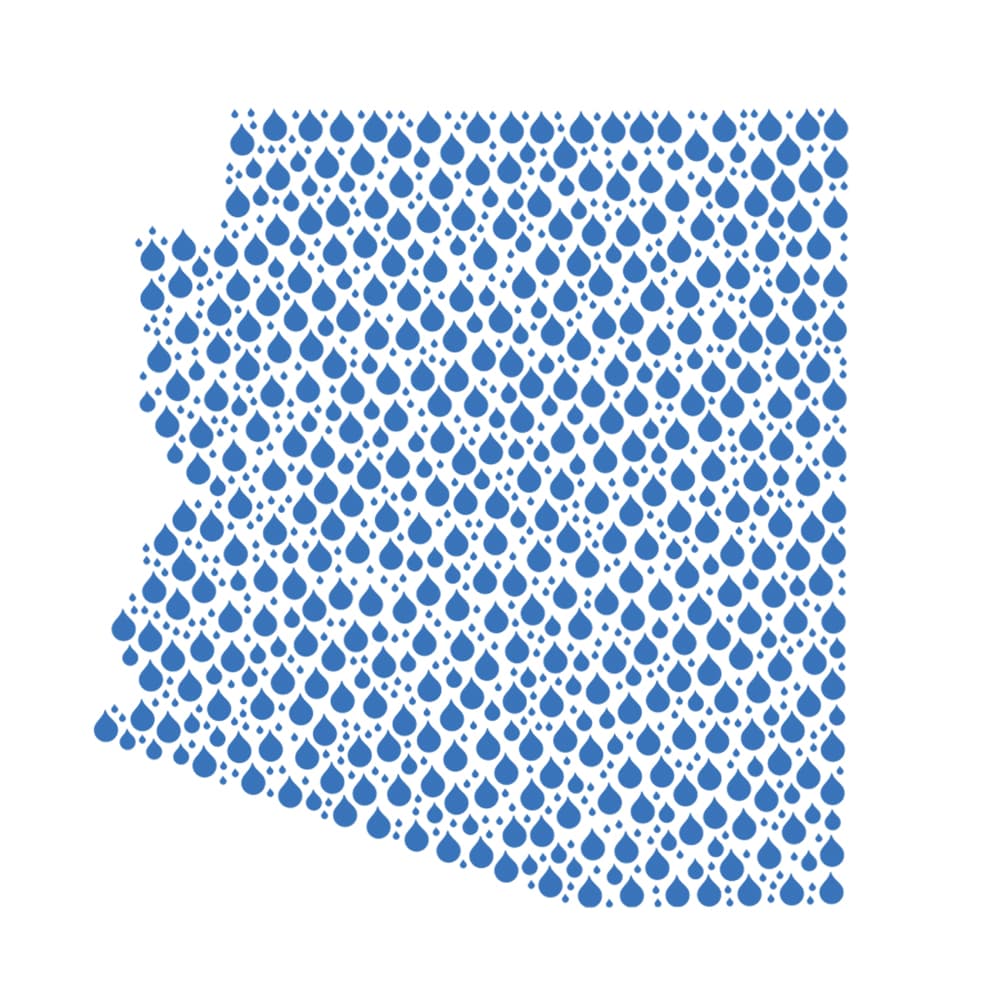AMWUA Blog
BY: AMWUA StaffA water terminology guide to enhance understanding of this essential resource in Arizona

With the 2025 Legislative Session underway, there will be plenty of conversations and news stories about water. While we don’t know the current session's outcome, we do know that the water world is complex, diverse, and full of terminology, which can confuse anyone who isn’t regularly exposed to it.
When discussing anything related to water—such as water quality, sources and supplies, management and policies, and the quality and delivery of your water—you’re likely to encounter acronyms and terms that may sound foreign in everyday conversations. So, we’re here to help translate.
Our AMWUA Water Glossary aims to provide clear and understandable definitions of many commonly used water terms, helping everyone better understand and participate in Arizona water discussions. We hope it provides insight and clarity into the terminology you can use when discussing and reading about water in our state.
Here are a few examples of how the AMWUA Water Glossary is helpful:
WATER SOURCES
It’s important to note that each AMWUA city has diverse water supplies to best serve its residents and commercial customers. Having more than one water source creates a more robust and reliable water supply for our communities. That also benefits the Valley's economy by ensuring a more sustainable way of life for everyone in the desert.
Arizona has four critical sources of water:
- Surface Water: Waters that are generally found in springs, streams, rivers, lakes and ponds, in natural channels above ground. The Salt and Verde Rivers serve the AMWUA cities through the Salt River Project.
- Colorado River Water: Water from the main stem of the Colorado River. Arizona shares the Colorado River with California, Nevada, New Mexico, Utah, Wyoming, Colorado, and Mexico. This surface water is regulated by the Federal Government.
- Groundwater: Water under the earth’s surface that fills the pore spaces between soil particles and fractured rock.
- Recycled Water: Water sent down the drain that is treated to a very high quality to extend and expand its reuse. The term is used to convey the value of this water as an essential supply. Advanced Water Purification (AWP) is an advanced technology and process used to treat and purify recycled water to drinking water standards.
WATER MEASUREMENTS
Understanding water news or reports can be challenging, given the different measurements used. For example, we have feet, kilometers, and miles for distance, and water is also measured by varying units depending on the context.
- Acre-foot: A water quantity measurement equal to 325,851 gallons (enough to cover one acre of land in water one foot deep). In Arizona, this is typically enough water for three single-family homes during a year.
- Gallons Per Capita Per Day (GPCD): The average quantity of water each person uses in one day. ADWR sets GPCD targets for water providers in the five AMAs.
WATER AGENCIES
Agencies regulate all aspects of water in Arizona, but they are often referred to only by their acronyms.
- ADEQ (Arizona Department of Environmental Quality): The state agency responsible for oversight, regulation, and enforcement of Arizona’s water quality regulations. ADEQ regulates groundwater, surface water, and recycled water.
- ADWR (Arizona Dept of Water Resources): The state agency, created in 1980 by the Groundwater Management Act, designated to implement the State’s water laws. ADWR oversees Arizona’s water supplies and supports statewide and local water planning efforts.
- Water Infrastructure Finance Authority of Arizona (WIFA): WIFA is a State Agency that provides financing assistance for the construction, rehabilitation, and/or improvement of drinking water, wastewater, wastewater reclamation, and other water infrastructure projects. In 2022, the Legislature greatly expanded WIFA's authority to include augmentation and appropriated over $1 billion to the agency.
WATER POLICIES AND LAWS
In Arizona, we hear important acronyms for laws, policies, and programs that have been put in place to regulate and manage water across the State and beyond.
- ·Assured Water Supply Program (AWS): A set of consumer protection regulations that apply within the five AMAs based on the principle of “water first, then development.” Before a developer can sell subdivision lots, they must meet the Assured Water Supply criteria, including having access to enough water to last 100 years. The AWS Program is the basis for Arizona’s long-term sustainable growth.
- Groundwater Management Act (GMA): Enacted by the Legislature in 1980 to address the State’s problem of groundwater depletion.
We recognize that the world of water is far from simple, so we suggest keeping our glossary handy for your next conversation about water, which we hope occurs frequently. After all, water is essential to our collective long-term sustainability and ongoing prosperity here in Arizona.
As we continue to explore water-related topics each week with our AMWUA Blog, we encourage you to subscribe to learn more about critical water issues, local water management strategies, water innovation projects, and conservation efforts.
For 55 years, the Arizona Municipal Water Users Association has worked to protect our member cities’ ability to provide their communities with assured, safe, and sustainable water supplies. For more water information, visit www.amwua.org .
